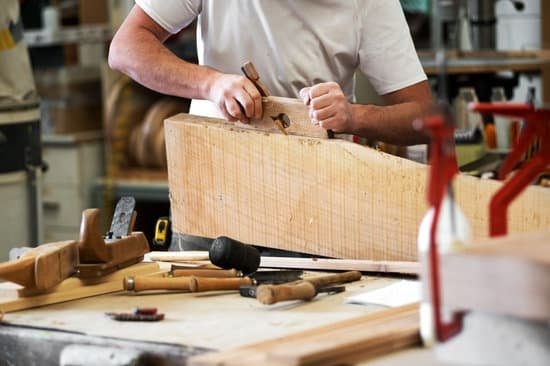Are you wondering how much is old Victorian woodwork worth? The allure of old Victorian woodwork has captivated the hearts of homeowners, collectors, and enthusiasts for years. From intricate carvings to delicate trim, this style of woodwork is not only unique but also holds significant value in the market.
Old Victorian woodwork is defined by its ornate and elaborate designs, often showcasing the craftsmanship and attention to detail that was prevalent during the Victorian era. Whether it’s intricate scrollwork, floral motifs, or detailed paneling, each piece tells a story of the time it was created. This uniqueness and historical significance contribute to its value in today’s market.
When determining the worth of old Victorian woodwork, various factors come into play. The condition of the woodwork, its quality and craftsmanship, as well as its rarity in the market all influence its value. Additionally, understanding who buys and sells old Victorian woodwork can provide insight into its demand and potential investment opportunities. In this article, we will delve into these factors to help you gain a deeper understanding of the worth of old Victorian woodwork.
Defining Old Victorian Woodwork
Old Victorian woodwork encompasses a wide range of design and craftsmanship that originated during the Victorian era, which lasted from 1837 to 1901. What makes old Victorian woodwork unique and valuable is its intricate details, ornate carvings, and timeless appeal. During the Victorian era, woodworking was considered an art form, and the pieces created reflected the opulence and grandeur of the time period.
One of the defining characteristics of old Victorian woodwork is its use of high-quality woods such as mahogany, oak, walnut, and rosewood. These woods were often hand-carved and intricately designed to create decorative elements for furniture, interior trimmings, paneling, and more. The attention to detail and craftsmanship in old Victorian woodwork is what sets it apart from other styles and makes it highly sought after.
Another factor that contributes to the uniqueness and value of old Victorian woodwork is its historical significance. Many pieces of woodwork from this era are considered cultural artifacts that offer a glimpse into the past.
They serve as a link to a bygone era when craftsmanship was highly esteemed, and materials were meticulously chosen for their beauty and durability. This historical significance adds to the value of old Victorian woodwork, making it not just a piece of furniture or trim, but also a piece of history.
When considering how much old Victorian woodwork is worth, it’s important to understand these defining characteristics that make it unique and valuable. The rarity of genuine pieces from this era combined with their craftsmanship, historical significance, and aesthetic appeal all contribute to their overall worth in today’s market.
Factors That Influence the Value of Old Victorian Woodwork
Old Victorian woodwork holds a unique charm and historical significance that makes it highly sought after by collectors, homeowners, and restoration enthusiasts. The value of old Victorian woodwork is influenced by several key factors that contribute to its worth in the market.
Historical Significance
One of the primary factors that influence the value of old Victorian woodwork is its historical significance. Pieces of woodwork that can be traced back to renowned architects or craftsmen of the Victorian era are often highly coveted and command a higher price. Additionally, if the woodwork comes from a historically significant building or location, its value is further enhanced.
Rarity and Uniqueness
The rarity and uniqueness of old Victorian woodwork play a significant role in determining its value. Intricate carvings, ornate details, and delicate trim that showcase exceptional craftsmanship are highly valued due to their scarcity. One-of-a-kind pieces or designs that are not commonly found in other examples of Victorian woodwork can significantly increase the worth of a particular piece.
Condition and Authenticity
The condition and authenticity of old Victorian woodwork are critical factors in assessing its value. Well-preserved pieces with minimal damage or wear are generally more valuable than those requiring extensive restoration. Furthermore, authentic Victorian woodwork that has not been heavily altered or modified over time retains its original character and appeal, contributing to its value in the eyes of collectors and buyers.
Assessing the Condition of Old Victorian Woodwork
Old Victorian woodwork holds a unique allure and is highly valued due to its historic significance, intricate craftsmanship, and timeless charm. However, the worth of old Victorian woodwork can vary greatly based on its condition. It’s essential to understand how the condition impacts the value of these pieces in order to accurately assess their worth.
Some factors influencing the value of old Victorian woodwork include:
- Structural integrity: The overall stability and soundness of the woodwork can significantly affect its value.
- Presence of damage: Any signs of damage such as cracks, rot, or infestations can diminish the worth of old Victorian woodwork.
- Originality: Preserving original features and details adds to the historical and aesthetic value of the woodwork.
It is crucial to thoroughly inspect old Victorian woodwork for any signs of wear, damage, or alterations when assessing its condition. The presence of any imperfections can have a notable impact on the overall worth.
Quality restoration work can enhance the value of old Victorian woodwork by bringing it closer to its original state. Conversely, poorly executed repairs or alterations may decrease its value. Therefore, a comprehensive evaluation of the condition is necessary to determine how much old Victorian woodwork is worth in today’s market.
In essence, while old Victorian woodwork holds considerable value due to its historical significance and craftsmanship, assessing its condition plays a vital role in determining its worth in today’s market. By considering factors such as structural integrity, presence of damage, and originality, one can better understand how much these exquisite pieces are truly worth.
Types of Old Victorian Woodwork
When it comes to old Victorian woodwork, there is a wide range of types that collectors and enthusiasts may come across. From grand, ornate carvings to delicate trim work, the diversity of Victorian woodwork is part of what makes it so valuable and sought after.
One of the most iconic features of Victorian woodwork is the intricate carvings that can be found on everything from furniture to staircases. These detailed designs often reflect the craftsmanship and attention to detail that was valued during the Victorian era.
In addition to elaborate carvings, delicate trim work is another hallmark of old Victorian woodwork. This can include decorative moldings, paneling, and other embellishments that were commonly used in Victorian homes and buildings. The level of intricacy and design in these pieces can vary widely, but they all contribute to the overall aesthetic appeal of Victorian woodwork.
The variety of types within old Victorian woodwork means that there is something for every collector or enthusiast, whether they are drawn to the grandeur of ornate carvings or the subtlety of delicate trim. Understanding these different types and their unique characteristics is essential for assessing the value and worth of old Victorian woodwork pieces in today’s market.
Determining the Quality and Craftsmanship of Old Victorian Woodwork
Old Victorian woodwork is renowned for its exceptional quality and craftsmanship, making it a highly sought-after item in the antique market. When determining the quality of old Victorian woodwork, one must consider the intricate details and fine craftsmanship that went into creating these pieces. The level of skill and artistry involved in producing old Victorian woodwork greatly contributes to its value.
One key factor to assess when determining the quality of old Victorian woodwork is its design and intricacy. These pieces often boast elaborate carvings, ornate details, and decorative trim that showcase the expertise of the craftsman. The level of detail and precision in these woodwork items can significantly impact their value in the market.
Another aspect to consider is the type of wood used in creating old Victorian woodwork. High-quality woods such as mahogany, walnut, and oak were commonly utilized due to their durability and exquisite appearance. The use of premium wood materials further enhances the value of old Victorian woodwork, especially when combined with skilled craftsmanship.
Moreover, examining the condition of old Victorian woodwork is essential in evaluating its worth. Pieces that have been well-maintained over time will retain more value compared to those that have undergone extensive damage or deterioration.
| Factor | Impact on Worth |
|---|---|
| Design & Intricacy | Significantly impacts value |
| Type of Wood | Enhances value when combined with skilled craftsmanship |
| Condition | Well-maintained pieces retain more value |
The Market for Old Victorian Woodwork
Old Victorian woodwork holds a unique appeal for both buyers and sellers in the antique and vintage market. This section will delve into the intricate world of old Victorian woodwork, exploring who is interested in buying it as well as who sells these historical pieces.
Buyers of Old Victorian Woodwork
Collectors and enthusiasts of Victorian-era architecture are often drawn to old Victorian woodwork. These individuals appreciate the craftsmanship and attention to detail that went into creating these pieces, whether it’s an ornate staircase railing or a delicate trim on a doorway.
Additionally, interior designers and homeowners looking to add a touch of historic charm to their properties may also seek out old Victorian woodwork for restoration or decorative purposes. The timeless appeal of these pieces makes them popular among those who appreciate the history and beauty of the era.
Sellers of Old Victorian Woodwork
Antique dealers and specialty shops dedicated to architectural salvage are primary sellers of old Victorian woodwork. These professionals have an eye for quality pieces and often source them from historic homes, buildings, or estate sales.
In addition, individuals who are renovating or demolishing older properties may sell architectural elements such as doors, mantels, or window frames that feature stunning Victorian-era woodwork. Online marketplaces also provide a platform for sellers to connect with buyers interested in acquiring old Victorian woodwork for restoration projects or decorative purposes.
As with any antique or vintage item, the market for old Victorian woodwork is driven by a combination of historical significance, rarity, craftsmanship, and current demand. Understanding this dynamic can help potential buyers and sellers navigate the market effectively while determining the value of these captivating pieces.
Appraising Old Victorian Woodwork
Old Victorian woodwork holds a unique and timeless allure that captivates homeowners, collectors, and enthusiasts alike. The intricate details and craftsmanship of these pieces make them highly sought after in the market. Given the growing interest in vintage and historical items, old Victorian woodwork has become a valuable commodity. In this section, we will delve into the process of appraising old Victorian woodwork to help you identify its true value.
When it comes to determining the worth of old Victorian woodwork, several factors come into play. The rarity, quality of materials used, craftsmanship, and historical significance are all influential in appraising its value. For example, a piece attributed to a renowned Victorian era carpenter or designer would fetch a higher price than an anonymously crafted item.
Assessing the condition of old Victorian woodwork is another crucial aspect in determining its value. Pieces that have been well-preserved over time with minimal damage or wear are naturally more valuable than those that have been poorly maintained or extensively repaired. Appraisers consider factors such as structural integrity, original finishes, and any signs of alteration when valuing old Victorian woodwork.
| Factors Influencing Value | Impact on Worth |
|---|---|
| Rarity | Influential |
| Craftsmanship | Significant |
| Condition | Crucial |
Case Studies
Old Victorian woodwork holds a special place in the world of vintage and antique items, captivating the interest of both collectors and homeowners alike. This section will delve into real-life case studies to provide insight into the value and potential worth of old Victorian woodwork.
- Case Study 1: A couple in New England discovered an original Victorian hand-carved fireplace mantel during a renovation of their historic home. The intricate detailing and craftsmanship of the piece caught the attention of antique dealers, leading to its sale for $5,000. The rarity of such a well-preserved item contributed significantly to its value, demonstrating how demand for authentic Victorian woodwork can affect pricing.
- Case Study 2: In a small town in rural England, an auction house featured a set of ornate Victorian ceiling moldings salvaged from a demolished estate. Despite their age, the impeccable condition and elaborate design prompted enthusiastic bidding among antique enthusiasts. The final sale price exceeded expectations at $3,500, emphasizing the influence of quality and craftsmanship on the worth of old Victorian woodwork.
- Case Study 3: A professional appraiser evaluated a collection of various Victorian woodwork pieces, including window trims, balusters, and cornices from an estate sale. Through meticulous assessment of their historical significance and condition, it was determined that some pieces were more sought after due to their rarity and unique design elements.
As a result, the overall value for the entire collection amounted to $10,000. This case illustrates how diverse types of old Victorian woodwork can vary in worth based on individual characteristics.
These case studies exemplify tangible examples of how much old Victorian woodwork is worth in today’s market. From delicate trim to intricate carvings, each piece carries its own historical and aesthetic value that can command significant prices when properly assessed and marketed.
Conclusion
In conclusion, old Victorian woodwork holds a unique allure and value that continues to attract buyers and collectors. Its distinctive craftsmanship, intricate carvings, and delicate trim make it a sought-after investment for those who appreciate its historical significance and aesthetic appeal. The worth of old Victorian woodwork is influenced by several factors, including its condition, quality, and the current market demand.
One of the key questions often asked is: “How much is old Victorian woodwork worth?” The answer to this question depends on various factors such as the type of wood used, the level of craftsmanship, provenance, and current market trends. Assessing the condition of old Victorian woodwork also plays a significant role in determining its value, as well-maintained pieces tend to command higher prices compared to those in poor condition.
For those considering investing in old Victorian woodwork or looking to appraise their existing pieces, it’s essential to understand the market dynamics and seek professional appraisal services. Auction houses, antique dealers, and specialty appraisers can provide valuable insights into the value of old Victorian woodwork based on current market trends and comparable sales. Ultimately, for enthusiasts and investors alike, old Victorian woodwork represents not only a tangible asset but also a piece of history worth preserving for future generations.
Frequently Asked Questions
How Do I Know if My Old Furniture Is Valuable?
Determining the value of old furniture involves several factors such as the age, style, condition, and rarity of the piece. It’s important to look for any marks or labels that could indicate a well-known maker or designer.
Additionally, research on similar pieces or consulting with an appraiser can also help in determining the potential value of your old furniture.
How Can You Tell if Wood Is Antique?
Identifying antique wood involves examining its color, grain pattern, and texture. Antique wood tends to have a rich patina that comes with age, as well as a deep and lustrous color that may not be easily replicated in newer woods. Additionally, signs of wear and distress can also indicate the age of the wood.
What Wood Was Popular in Victorian Times?
During Victorian times, mahogany was one of the most popular woods used in furniture making. Its rich color and durability made it a desirable choice for crafting elegant and ornate furniture pieces that were characteristic of the Victorian era. Other popular woods included walnut, oak, and rosewood, each lending their own unique qualities to the furniture crafted during this period.

Hi everyone! I’m a woodworker and blogger, and this is my woodworking blog. In my blog, I share tips and tricks for woodworkers of all skill levels, as well as project ideas that you can try yourself.





